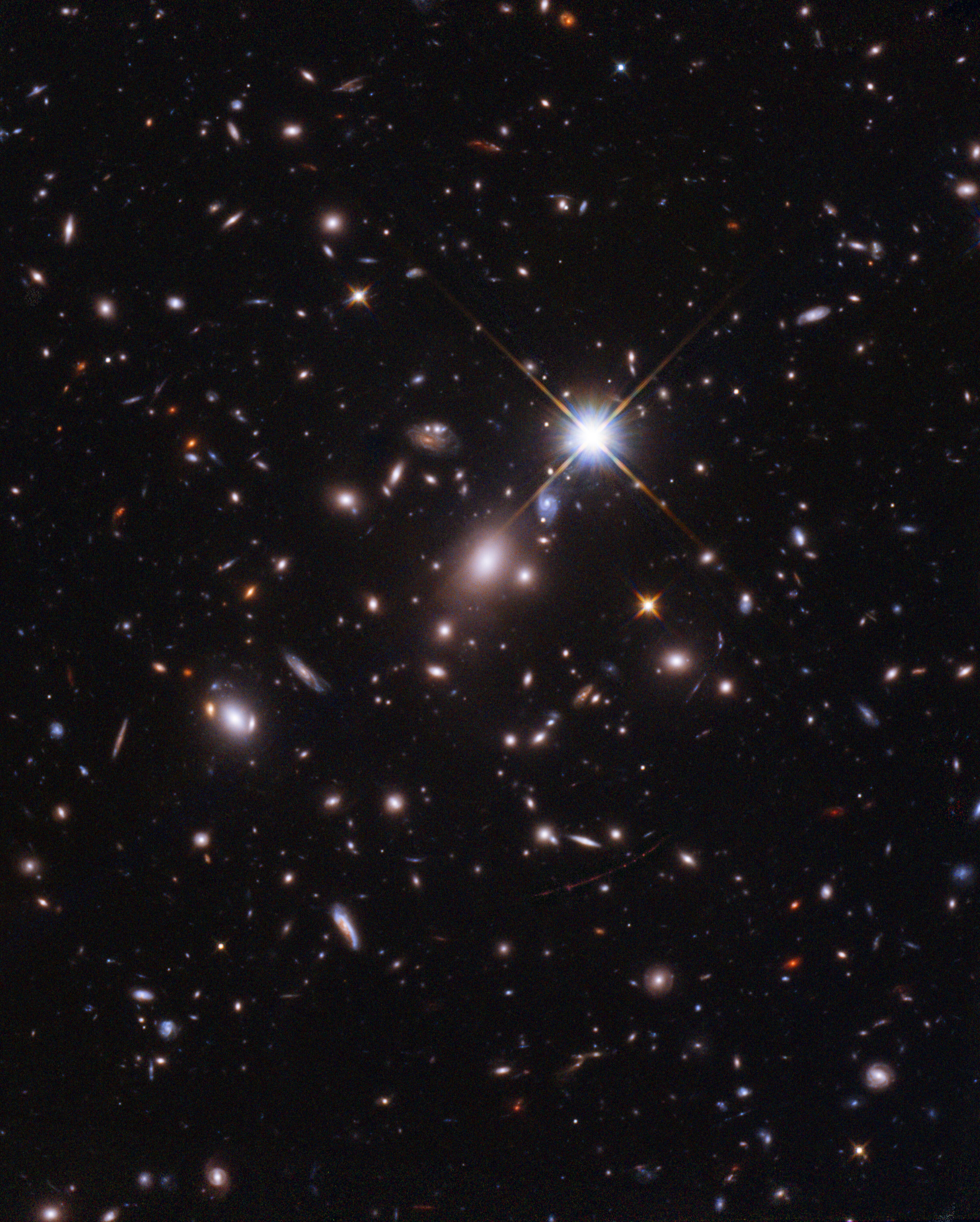The Independent's journalism is supported by our readers. When you purchase through links on our site, we may earn commission.
Hubble astronomers discover the most distant star yet
Using the Hubble Space Telescope and a technique called gravitation lensing, astronomers have imaged a star from just 900 million years after the Big Bang.

Using the Hubble Space Telescope and the fortuitous alignment of distant galaxies, astronomers have discovered the most distant star ever imaged.
Dubbed Earendel, an Old English name meaning “rising light” or “morning star,” the star is more than 12 billion light years away, and researchers believe the highly magnified image they obtained or Earendel captured the star as it existed just 900 million years after the Big Bang.
“It is the most distant individual star,” said Brian Welch, a PhD candidate in astronomy at Johns Hopkins University and lead author of a paper describing Earendel’s discovery published Wednesday in the journal Nature. “We’ve seen galaxies that are further away, but in those galaxies, they’re not so well resolved, so we’re seeing the light from the millions of stars within that galaxy all blended together.”
Beyond setting the record for most distant star so far, Earendel’s discovery offers scientists a tantalizing glimpse at the makeup of the very early universe, and tees up the potential ad-on discoveries by the more powerful James Webb Space Telescope when it begins science operations in a matter of months.
“This was the kind of science that JWST was kind of designed to do,” Mr Welch said.
Based on their observations so far, he and his colleagues know Earendel must be a large star, about 50 times more massive than our Sun. And yet without the use of special techniques to magnify its light, the distant star would be far too dim to see directly with any telescope.
The discovery was instead made possible by gravitational lensing, where astronomers exploit the fact that the gravity of massive objects distorts the space around them, bending light passing nearby in a fashion analogous to a glass lens. In the current study, the Hubble telescope used a cluster of galaxies as a lens to magnify the light of a much more distant galaxy that happened to line up in just the right way behind the cluster.
“Typically with gravitational lensing with a galaxy, you’ll see multiple images of it,” Mr Welch said. “Then, when the alignment is just right, those images merge together into these long, crescent-shaped arcs.”
The longer the arc, the greater magnification achieved through the lensing, he said, and Earendel’s host galaxy appeared as one of the longest arcs discovered using the technique. Within that arc, Mr Welch found there were areas of even greater magnification and resolution, with Earendel falling into just the right spot to achieve maximum magnification, making the star appear at least 1,000 times brighter than it would otherwise.
“If it were even just a little ways further out, we would see it at much lower magnification,” he said.
Using that gravitational magnification, Mr Welch and his colleagues were able to determine the redshift value for Earendel, a measure of how much its light has been stretched out over time as it has traversed the expanding universe over billions of years to Earth. That makes redshift values a measure of distance as well as optical wavelength, and Earendel came in at a redshift value of 6.2.
“The previous distance record holder was at redshift 1.5, which would be about 9.4 billion years into the past,” Mr Welch said, “Whereas this one is at redshift 6.2, which is about 12.8 billion years into the past.”
Such a distant star could tell science a great deal about the early universe, and a cosmic environment that was probably very different from the environment that births stars today. At 900 million years after the Big Bang, Mr Welch said, there would not have been time for earlier generations of stars to enrich the stellar environment with the heavier, metallic elements that we see in stars today.
“The star is probably going to have fewer of those heavier elements, which means it’s going to be a really interesting way to study what these early generations of stars look like,” he said.
But that’s work for the Webb telescope when it comes online later this year. With its larger optics and infrared sensitivity, Webb will be able to use Earendel’s light to characterize its elemental makeup and could work hand-in-glove with Hubble to investigate even more distant stars using gravitational lensing.
Mr Welch is excited that Webb successfully deployed after decades in the making, so that there will be little more than months separating Earendel’s discovery with Hubble, and a more comprehensive follow-up with Webb.
“A lot of my co-authors on this paper have been waiting for Webb for the last 20 years,” he said. “Being able to make this discovery right before [Webb] launched and then be able to have time within the first cycle of observations is incredibly exciting”
Subscribe to Independent Premium to bookmark this article
Want to bookmark your favourite articles and stories to read or reference later? Start your Independent Premium subscription today.

Join our commenting forum
Join thought-provoking conversations, follow other Independent readers and see their replies